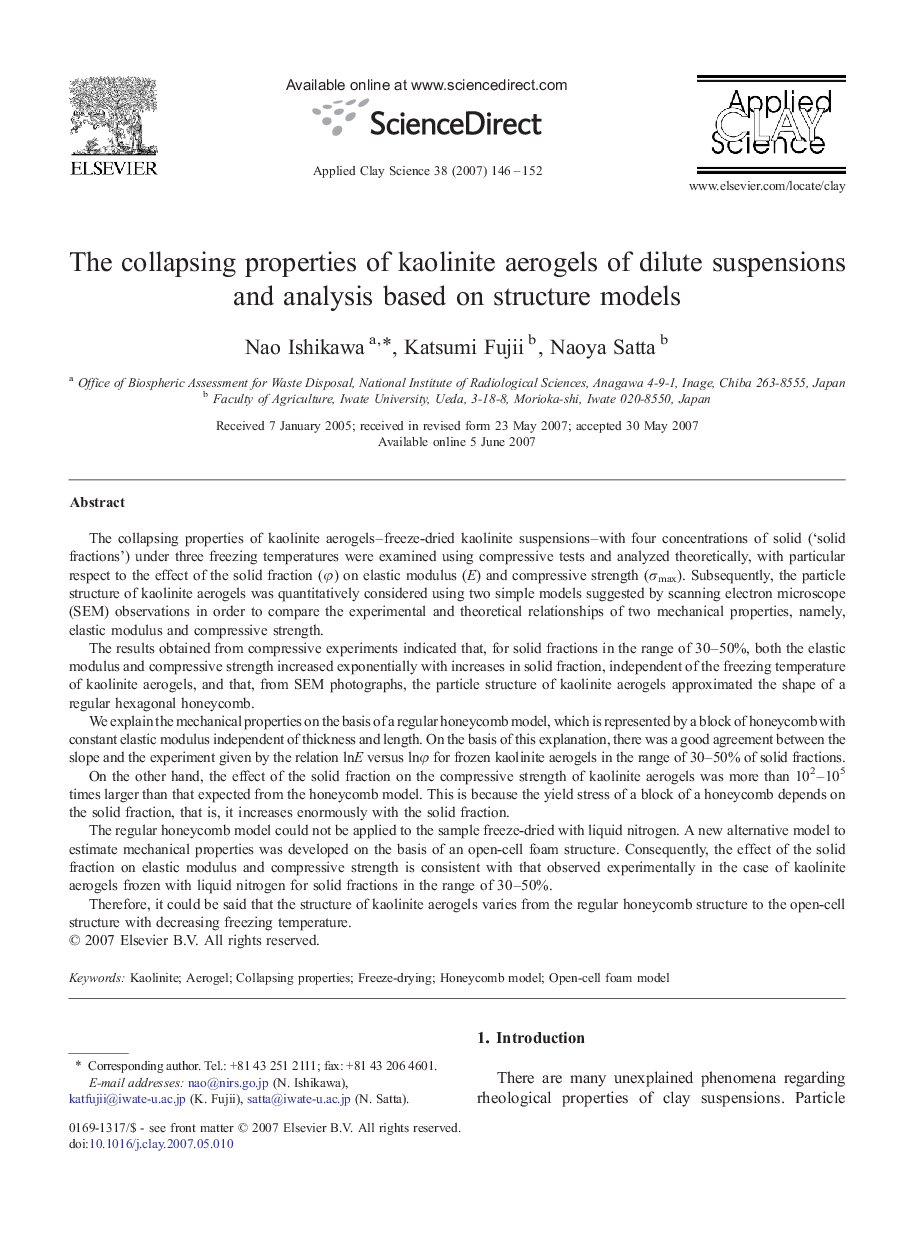| کد مقاله | کد نشریه | سال انتشار | مقاله انگلیسی | نسخه تمام متن |
|---|---|---|---|---|
| 1696513 | 1519132 | 2007 | 7 صفحه PDF | دانلود رایگان |

The collapsing properties of kaolinite aerogels–freeze-dried kaolinite suspensions–with four concentrations of solid (‘solid fractions’) under three freezing temperatures were examined using compressive tests and analyzed theoretically, with particular respect to the effect of the solid fraction (φ) on elastic modulus (E) and compressive strength (σmax). Subsequently, the particle structure of kaolinite aerogels was quantitatively considered using two simple models suggested by scanning electron microscope (SEM) observations in order to compare the experimental and theoretical relationships of two mechanical properties, namely, elastic modulus and compressive strength.The results obtained from compressive experiments indicated that, for solid fractions in the range of 30–50%, both the elastic modulus and compressive strength increased exponentially with increases in solid fraction, independent of the freezing temperature of kaolinite aerogels, and that, from SEM photographs, the particle structure of kaolinite aerogels approximated the shape of a regular hexagonal honeycomb.We explain the mechanical properties on the basis of a regular honeycomb model, which is represented by a block of honeycomb with constant elastic modulus independent of thickness and length. On the basis of this explanation, there was a good agreement between the slope and the experiment given by the relation lnE versus lnφ for frozen kaolinite aerogels in the range of 30–50% of solid fractions.On the other hand, the effect of the solid fraction on the compressive strength of kaolinite aerogels was more than 102–105 times larger than that expected from the honeycomb model. This is because the yield stress of a block of a honeycomb depends on the solid fraction, that is, it increases enormously with the solid fraction.The regular honeycomb model could not be applied to the sample freeze-dried with liquid nitrogen. A new alternative model to estimate mechanical properties was developed on the basis of an open-cell foam structure. Consequently, the effect of the solid fraction on elastic modulus and compressive strength is consistent with that observed experimentally in the case of kaolinite aerogels frozen with liquid nitrogen for solid fractions in the range of 30–50%.Therefore, it could be said that the structure of kaolinite aerogels varies from the regular honeycomb structure to the open-cell structure with decreasing freezing temperature.
Journal: Applied Clay Science - Volume 38, Issues 1–2, December 2007, Pages 146–152